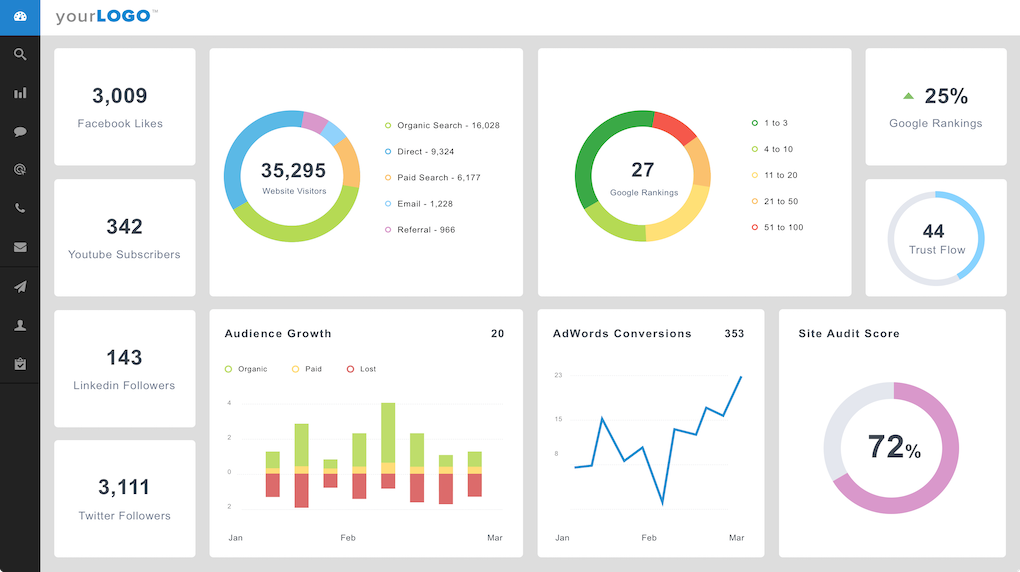Losing a customer can feel defeating. You may wish you could see into the minds of your leads to understand what specific points turned them off. Short of becoming telepaths, there are tools at your disposal that allow you to track, analyze, and understand the strengths and weaknesses of your marketing and sales processes.
These days, you can track customer journey’s from first contact all the way to conversion or lost sale. Identifying and evaluating your customer journeys can show you where your sales process is inconsistent. It also allows you to tap into the minds of your customers and better service their wants and needs.
A lost customer doesn’t have to become a point of despair. With dedicated data-mapping and a commitment to user-engagement, you can fix lost revenue points and turn them around in one month or less.
Visualize your current customer journeys
Conducting consistent pulse checks on your customer journeys will help you stay ahead of any potential losses. Look at the journeys you’ve mapped out and executed and see where leads are converting and exiting prematurely. To gain a better understanding, and to communicate this information with your team, it’s best to visualize these journeys by drawing up a user-flow.

Identify and improve underperforming conversion points
You can easily identify low conversion rates by making use of the tracking tools provided by search engines, social platforms, CRM and marketing automation software and others in your martech stack.
Look specifically at the conversion rate or behavior at each touchpoint and ask yourself these questions:
-
Is there something about the execution of this journey that could be improved?
-
Is the messaging a natural continuation of the previous step and building upon value and knowledge?
-
Is there a problem with the delivery? (Perhaps it’s simply an issue of bad timing or using the wrong channel.)
You can test different sending times and days to see if you notice a preference. This testing works best with a larger audience, so use no less than 1,000 emails when you begin. It’s also a good idea to A/B test the messaging on your landing pages to see if certain copy performs better. Refine, refine, refine.
Find opportunities to re-engage with users during exit points
The next step is to focus on your exit points and catch users who still don’t convert.
If your first-line of content isn’t working, try a more educational approach, or entice your users with a better offer. Building out your customer journeys goes beyond simply creating a flywheel; you need to help your audiences navigate the journeys you’ve laid out and tailor the content as you go.
Use data and experiments to your advantage. Send triggered quizzes to discover new personas and tailor follow-up content to match. Set up remarketing display ads that change their messaging if a user doesn’t click the CTA. Include external campaign ads in your emails to encourage more clicks.
Have some fun and experiment with new content/order/channel. You won't know what works until you experiment till you find the answer.
Reverse engineer successful customer journeys
Don’t make it all about the losses. Identifying your positive sales and how you won them will help you reverse engineer your process.
To start, take a deep dive into the data of your converters, or even better, your best clients, and find out what points drove them towards the sale. If you notice a common progression that doesn’t follow your already made customer journeys, make sure to act on that insight.
Jumping into this process can tell you what order to present content and how many steps are needed before a user is in a place to convert. You may even find a better way to segment your audiences and branch off their different journeys as you further refine your conversions.

Take a step back and look at your user journeys holistically, what’s missing and what’s irrelevant?
Now that you have your standard journeys converting better, look to see if there are any lost opportunities. Ask yourself:
-
Do you have an evergreen, always-on journey in place?
-
Do you have abandoned cart journeys in place?
-
What about re/up-selling?
-
Referral journeys?
Ensuring you have varied journeys in place to help retain and progress clients. This will help you attract new clients and keep your current roster full.
Next, try to shake out any irrelevant journeys. This time, ask yourself:
Remove these so that they’re not wasting time or leading users down an irrelevant path. This will help you and your team focus solely on the journeys that are helping you achieve your goals and improve revenue.
Further points to consider
Track conversions for each step and identify ways to improve them
It’s hard to know what’s broken and what to optimize if you’re only measuring the end-conversion. Make sure that you can track the conversion rate for each stage of the user journey to allow for improvements. Creating live dashboards and using user journey tools can allow you to regularly check on the performance of each stage, and overall results without spending hours of manual effort each time.

Make use of all your marketing tactics and leverage your platforms
Platform improvements and new tools are constantly going live and it’s important to capitalize on this to improve your ROI and keep ahead of your competitors.
Google recently brought in offline conversion tracking capabilities and HubSpot has a built-in feature to help you manage lost-won leads within their platform. Offline conversion tracking is a great way to develop a feedback loop from the end of your journey to the start. If your journey starts with Google Ads, Google will learn more about what higher quality lead looks like and what it’s worth to you. For those with an online and offline presence, it can also accurately attribute offline conversions to a specific marketing touchpoint, rather than reporting that users have exited when really they have converted.
Integrating Klaviyo with Shopify allows you to create some fantastic abandoned cart and upsell email marketing strategies. Salesforce’s customer journey mapping and HubSpot’s workflows give you tools to build and track the progress of your user journeys and nurture streams, although only from a specific entry point. To discover how you can measure and track the user journey from multiple entry points, speak to one of our experts.
Prioritize effective journey maps
Fixing lost revenue points starts with understanding your journeys from all sides. If you can evaluate the way you lose sales just as deeply as the way you win them, you have more opportunities to intercept exits and bring leads back into the conversion funnel.
In a way, you’re already a telepath. Tune into your data, analytics, and tracking tools. Service your customers before they ask for it and start encouraging longer, more holistic customer relationships.